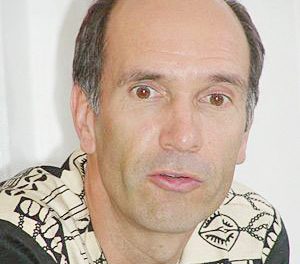
Government’s Socio-Economic Development framework launched in Kharas region

The government officially launched the Socio-Economic Development (SED) framework on Monday, which includes a robust process by which Hyphen will validate estimates through comprehensive baseline studies conducted during the feasibility phase and in the construction phase, creating 15,000 new jobs.
The launch marks a significant milestone in the state’s plans for social progression through infrastructure development and economic advancement.
The National Planning Commission Director General and Chairperson of the Green Hydrogen Council, Obeth Kandjoze, said that the first giga-scale hydrogen project would create 3,000 permanent jobs during its operation, with 90% of these jobs filled by Namibians and 20% specifically targeted for youth.
“This is what Harambee looks like Prosperity for all in a time when we need it most, indeed a time when people of Kharas need it the most. From the onset, the government was adamant that a Hydrogen economy could only be possible when it was rooted in young people, local communities, and small to medium businesses. In addition, it was plainly demonstrated in the tender requirements, which weighed 25% of the total evaluation criteria. Through the bid, the government requested bidders to outline the number of new jobs they would create, what percentage was reserved for young Namibians, and what portion of the total project budget was reserved for Namibian SMEs,” Kandjoze said.
He added that the SED workstream was chaired by the Executive Director of the National Planning Commission and supported by the Presidential Advisor on Youth Matters and that additional workstream members came from the Ministries of Urban and Rural Development, Labour, Higher Education, as well as the Lüderitz Town Council.
“This diverse group of government negotiators and stakeholders ensured that the SED objectives of government were accurately represented in the Feasibility and Implementation Agreement which was signed in May.”
According to him, the project further estimates 30% local procurement of goods, services, and/or materials during the construction and operational phases. “Based on a total project cost of N$200 billion, this translates to N$60 billion of goods, services, and/or materials or N$15 billion per year during the 4-year construction period, as the process ensures that these estimated figures are transitioned to concrete committed figures, under a strict governance framework.”
Kandjoze further noted that beyond the indirect project benefits, Namibia will enjoy land rental fees of up to N$100 million per year during the feasibility studies with the first rentals expected before the end of this very year. “After FID, annual land rentals increase to N$330 million per year for the duration of the 40-year concession. Further, additional fiscal contributions include environmental levies, taxes, and profit share should government exercise its equity option.”
The government also recognizes the value of strategic relationships, both regional and worldwide, in realizing its goal of creating a Green Hydrogen ecosystem. One such collaboration that has already produced results is with the Federal Republic of Germany, notably its Federal Ministry of Education and Research (known as BMBF).
“On 25 August 2021, the two countries signed a €40 million grant programme intended for deepening Green Hydrogen cooperation between the two counties. One of the key priority areas of this Agreement was “Capacity Building” and €5 million (N$90 million) was allocated for scholarships for the Namibian youth.”
“Additionally, an initial cohort of this programme was awarded scholarships earlier this year, and the government has begun preparing for the second call. Through the Green Hydrogen Council, we are committed to ensuring increased representation of the youth from the Hardap and Kharas regions. As such, a dedicated team will visit the regions once the call is open to prioritizing local participation in the programme.”
“In November last year, we launched a National Green Hydrogen Strategy that further expands on Namibia’s green ambitions. Within this strategy, the government plans to eradicate unemployment by 2040 by creating up to 600,000 green jobs. To ensure these jobs are ‘quality’ jobs, it is imperative that the first 15 000 jobs are a benchmark for this future industry,” he concluded.












































